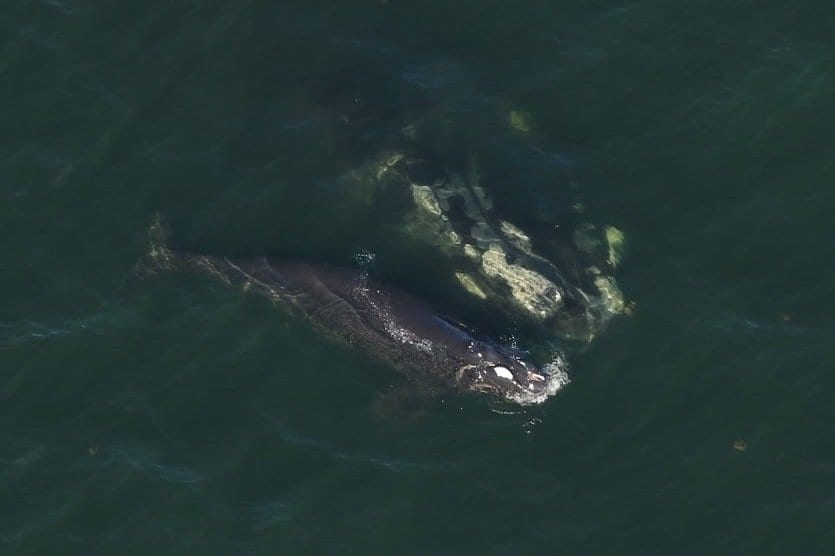Successful 2019-2020 Season
Our North Atlantic Right Whale Conservation Program just wrapped up a very successful surveying season! Throughout their flights, our aerial survey team spotted 88 right whales during 44 sighting events, including 8 out of the 10 total mother/calf pairs. North Atlantic right whales are one of the most endangered species in our oceans. There are only about an estimated 400 whales left in population. They are federally-protected under the Endangered Species Act, the Marine Mammal Protection Act and listed as endangered by the IUCN. Spotting 8 calves is very encouraging for the future of the species.
Right Whale History
Right whales were once found throughout the North Atlantic Ocean and were sought after by early whalers due to their slow swimming speeds, coastal habitat use, and thick blubber. They were deemed the “right” whale to hunt, thus the name. By the early 1700s, right whale numbers were so reduced that they were no longer of economic importance. The recovery for the species has been slow due to slow reproductive rates and threats from human-related activity, like vessel collisions and entanglements in fishing gear.

Takeaways from this Season
The first calf spotting of the season was on Monday, December 16, 2019. An aerial surveillance team from Clearwater Marine Aquarium identified the first North Atlantic right whale mom/calf pair of the season approximately 30 miles east of Sapelo Island, off the coast of Georgia. Scientists identified the mom by her number in the New England Aquarium Right Whale catalog as #3560. She is known to biologists and is a first-time mom, born in 2005.
Two weeks later, on Monday, December 30, the same aerial survey team identified the second mom/calf pair of the season off the coast of St. Simon’s Island, Georgia. Scientists from the New England Aquarium confirmed mom was Catalog #1612 – a mom for the 7th time.

Researchers spotted the 4th right whale calf of the 2019-2020 season off the Georgia coast on January 8, 2020, but the young whale was already injured. The mom being Catalog #2360.
NOAA urges everyone to please give these animals their space. Mom/calf pairs spend the majority of their time at, or a few feet below the water’s surface in the Southeast U.S. This is a critical and vulnerable time for right whale moms to bond with their calves – law requires staying away at least 500 yards by air and by sea.

On February 3, 2020, our researchers spotted Calvin with her calf off the cost of Georgia. This is Calvin’s 4th calf! Calvin, Catalog #2223 was orphaned at 8 months after her mother was hit by a vessel. Also during this aerial surveying trip, our researchers spotted two other calves! This is very exciting and good news for the population of right whales.
The first mom/calf pair of the season, Catalog #3560, were spotted in the Gulf of Mexico on March, 11 2020. They were spotted near Pensacola Pass and right whales are rare in that area. After weeks of tracking, the pair was seen south of Key West on March 26, 2020. The whales safely navigated around the keys and back into the Atlantic.

The Clearwater Marine Aquarium Right Whale Conservation Program actively monitors right whales during calving season through aerial surveys designed to mitigate vessel collisions and document reproductive rates; provides scientific data to marine decision makers on conserving the species; provides assistance during disentanglement events, carcass recovery and necropsies; assists with the collection of genetic material; and participates in tagging projects. For more information on the North American Right Whale Catalog, please visit the North Atlantic Right Whale Consortium website.
You can learn more about CMA’s right whale research efforts and help protect right whales by donating to this conservation program.
Photographs collected under NOAA research permit # 20556-01.